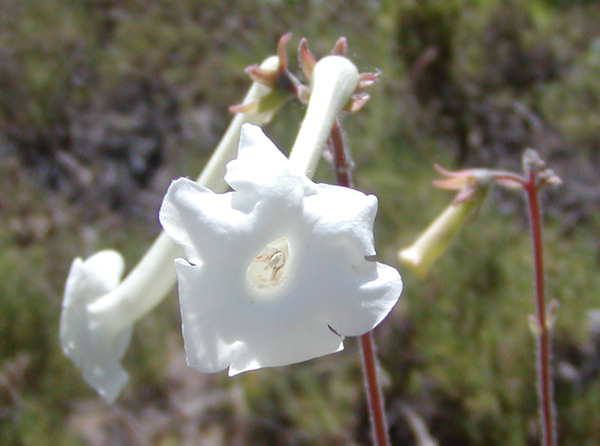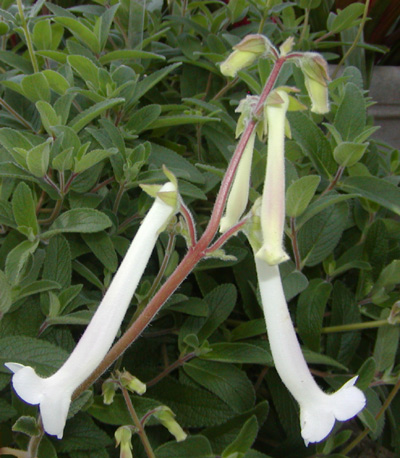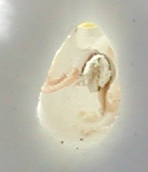Once again, we repeat a theme for this web site.
Successful growers (including everybody, for at least some things)
don't know why they succeed unless they also fail.
Only by noticing the difference between the conditions of failure
and success can we see what's important and what isn't.
Bright light is not enough.
Too many plants of Sinningia tubiflora
in bright light don't bloom.
One missing element that has been suggested is heat.
Higher temperatures, so the argument goes, is required to stimulate flowering
in this species, independent of light.
My own tests are not optimistic in this regard.
I give my plants as much light and heat as the yard has.
As mentioned above, one bloomed, two others didn't.
Another possible factor is water.
Here my results are more promising.
A naive grower (such as myself) might be caught assuming that a plant which
required lots of light (and perhaps, heat) would be drought-tolerant.
For years, I was not diligent about watering them.
Recently, I have worked harder at keeping them well-watered.
My plants have not been overwhelmed with flowers, by any means, but
definitely have borne more of them.
So my first guess is that the two most important factors are water and
light, with heat not so important.
However, the experiments continue...
In 2014, I kept a large plant in a relatively shady location
where it wouldn't dry out, and then watered it heavily.
I got the most flowers ever (for me).
There weren't millions of them, but at least a couple dozen.
My conclusion: the most important factor in getting
Sinningia tubiflora to bloom is...
water.
In this regard, it is somewhat different from its relative
S. warmingii.
At least under my conditions, a plant of the latter species
of reasonable size will always bloom, but the number of
flowers is affected by water availability.
Insufficient water seems to prevent
Sinningia tubiflora from blooming at all.
|


